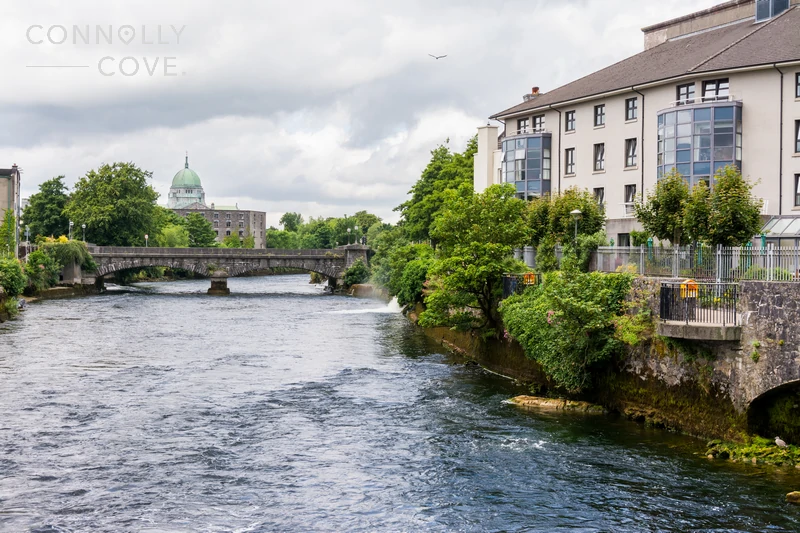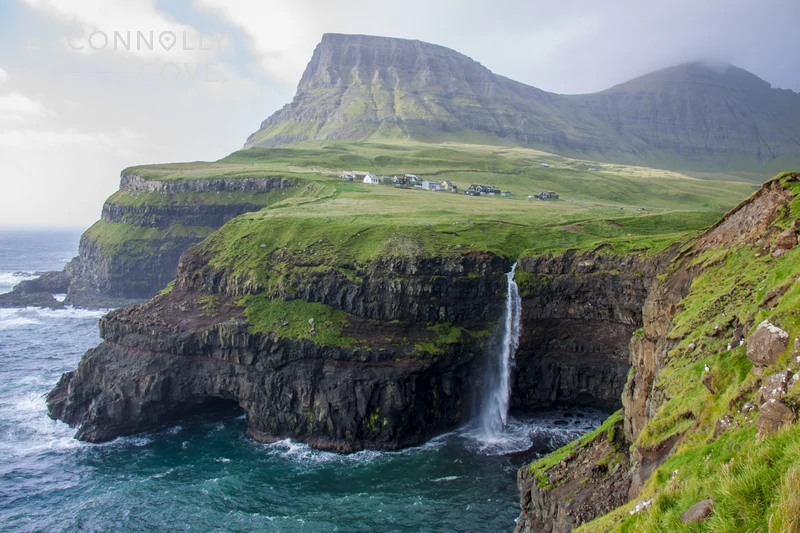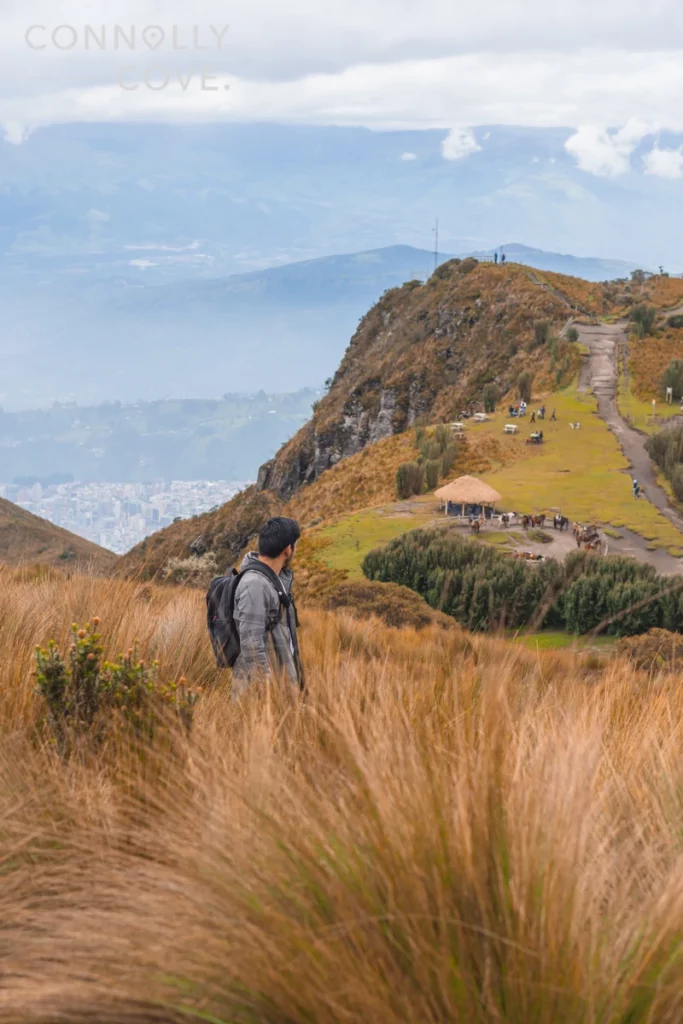Explore Ireland in March: Weather, Travel Tips & More!

Updated On: April 22, 2024 by Panseih Gharib
Are you planning a trip to Ireland in March? You’re in for a treat!
It is beautiful to visit Ireland in March, with its stunning landscapes, vibrant cities, and unique cultural experiences. Whether you’re exploring the bustling streets of Dublin, taking in the breathtaking views of the Cliffs of Moher, or immersing yourself in the rich history of Cork and Killarney, there’s something for everyone in this enchanting country.
Ireland in March

Regarding the weather in Ireland in March, you will enjoy the transition from winter to spring. The temperatures are beginning to rise, and the days are getting longer, making it an ideal time to explore the lush green landscapes that Ireland is famous for. While the weather can still be unpredictable, with occasional rain and chilly winds, the stunning sights and experiences more than make up for any weather.
In March, Ireland starts to come alive with the arrival of spring. The landscapes are adorned with colourful blooms, and the atmosphere is filled with a sense of renewal and vitality. The days are getting longer, allowing for more time to explore the beauty of the countryside and partake in outdoor activities such as hiking, cycling, and exploring the Wild Atlantic Way.
Places to Visit in Ireland in March
Depending on your preferences, there are many fantastic places to visit in Ireland in March. Here are some of our best suggestions:
Dublin
Visiting Dublin in March can be a fantastic experience, offering a mix of mild weather, festive celebrations, and cultural immersion. Here’s an elaboration on what you can expect:
Weather
- March marks the transition from winter to spring, so expect mild temperatures with an average high of around 11°C (52°F) and lows of 4°C (39°F).
- Pack layers as the weather can be changeable, with occasional rain and wind. An umbrella and waterproof jacket are essential.
Festivities
- St. Patrick’s Day (March 17th): Dublin transforms into a sea of green for the national holiday, with parades, live music, traditional dancing, and a vibrant atmosphere. Expect larger crowds and higher prices during this time.
- Other events: Depending on your exact travel dates, you might also catch other festivals like the Dublin International Film Festival or the Dublin Theatre Festival.
Things to do
- Explore historical sites: Dublin Castle, Trinity College (home to the Book of Kells), Kilmainham Gaol, and St. Patrick’s Cathedral offer insights into the city’s rich history.
- Enjoy the vibrant nightlife: Dublin boasts a lively pub scene with traditional music, comedy shows, and late-night bars.
- Take a day trip: Explore nearby Glendalough monastic site, Malahide Castle, or Howth village for a scenic escape.
- Immerse yourself in culture: Visit the Guinness Storehouse, the Irish Whiskey Museum, or the National Museum of Ireland to learn about Irish traditions and heritage.
Belfast
In March, Belfast offers a unique blend of spring awakening, cultural celebrations, and historical exploration. While the weather might still be crisp, the city comes alive with vibrant events and activities, making it an exciting time to visit. Here’s a breakdown of what awaits you:
Weather
- March marks the transition to spring, with average highs of 7°C (45°F) and lows of 1°C (34°F). It’s chilly but manageable.
- Pack layers and be prepared for rain showers.
- You’ll enjoy fewer crowds and potentially lower accommodation costs than in peak summer months.
Festivities
- St. Patrick’s Day (March 17th): Belfast embraces the national holiday with a colourful parade, traditional music sessions in lively pubs, and festive decorations. Expect a vibrant atmosphere but also potentially larger crowds and higher prices.
- Other events: Depending on your travel dates, you might catch the Belfast Film Festival, the Belfast Festival at Queen’s, or the Belfast Marathon.
Things to do
- Immerse yourself in history: Explore Titanic Belfast, an interactive museum showcasing the iconic ship’s story. Delve into the city’s past at Crumlin Road Gaol, a former Victorian prison, or wander through the historic Titanic Quarter.
- Uncover artistic gems: Visit the Ulster Museum for its impressive art, history, and archaeology collections. Catch a performance at the Grand Opera House or explore the vibrant street art scene in the Cathedral Quarter.
- Explore the outdoors: Stroll through the stunning Belfast Botanic Gardens, climb Cave Hill for panoramic city views, or visit Belfast Castle, nestled amidst beautiful parkland.
- Savour the local flavours: Enjoy fresh seafood at St. George’s Market, indulge in a traditional Ulster Fry, or sample craft beers at one of the city’s many breweries.
- Take a day trip: Explore the Giant’s Causeway, a UNESCO World Heritage Site with its unique rock formations, or delve into the natural beauty of the Mourne Mountains.
Additional Tips
- Purchase a Belfast Pass for discounted entry to many attractions and free public transport.
- Consider pre-booking tickets for popular attractions, especially around St. Patrick’s Day.
- Pack comfortable walking shoes, as Belfast is a walkable city.
- Download the Visit Belfast app for event listings, transportation information, and insider tips.
Other Places to Visit in Ireland in March

Beyond Dublin and Belfast, Ireland in March offers a wealth of captivating destinations to explore, each with unique appeal. Here are some suggestions tailored to different interests.
Killarney National Park
Immerse yourself in the breathtaking landscapes of Killarney, boasting majestic mountains, sparkling lakes, cascading waterfalls, and lush greenery. Hike amidst pristine wilderness, explore Muckross House and gardens or take a boat trip on Killarney Lake.
Dingle Peninsula
Embark on a scenic journey along the rugged coastline of the Dingle Peninsula, known for its dramatic cliffs, charming villages, and traditional Irish atmosphere. Hike the Dingle Way, visit Slea Head for mesmerising views, and savour fresh seafood in Dingle Town.
Connemara National Park
Discover the wild beauty of Connemara, characterised by its vast peatlands, rugged mountains, and tranquil lakes. Explore Kylemore Abbey, witness the Connemara ponies roaming freely, and stargaze under the clear night sky.
Kilkenny
Delve into the medieval charm of Kilkenny, boasting a well-preserved castle, narrow cobbled streets, and historic sites like St. Canice’s Cathedral and Rothe House. Don’t miss the lively pub scene and traditional music sessions.
Trim Castle
Journey back to Norman times at Trim Castle, one of the largest Anglo-Norman castles in Ireland. Explore its towers, courtyards, and exhibition spaces, and imagine the medieval battles that unfolded here.
Aran Islands
Discover the unique Gaelic culture and heritage of the Aran Islands, located off the coast of Galway. Explore the islands by bike or horse-drawn cart, visit ancient ruins, and learn about traditional crafts like knitting and storytelling.
West Cork
Escape the crowds and wander through the charming villages and dramatic landscapes of West Cork. Hike along the Sheep’s Head Way, visit Bantry House and gardens, and savour the region’s renowned seafood in local pubs.
Inishowen Peninsula
Explore the rugged beauty of the Inishowen Peninsula in County Donegal, known for its dramatic cliffs, sandy beaches, and ancient sites like Malin Head. Go surfing at Doagh Famine Village, visit Doe Castle, and enjoy the warm hospitality of the locals.
Glendalough
Step back at Glendalough, a monastic settlement nestled amidst the Wicklow Mountains. Explore the ruins of churches, round towers, and a high cross, and soak in the serenity of this ancient site.
Irish Cuisine
Ireland boasts a delicious and diverse cuisine, offering something for everyone. Here are some local specialities you must try, along with the regions where they’re particularly renowned:
- Irish Stew: A hearty dish of tender lamb, root vegetables, and herbs, best enjoyed in cosy pubs nationwide. Try it in Dublin at The Brazen Head, one of the oldest pubs in Ireland.
- Boxty: A potato pancake with various fillings like cheese, onions, or bacon, prevalent in Ulster counties like Donegal and Sligo. Sample it at The Boxty House in Dublin for a classic experience.
- Colcannon: Creamy mashed potatoes mixed with cabbage, kale, or spring onions, a staple comfort food throughout Ireland. Enjoy it with a side of bacon at The Porterhouse in Dublin.
- Irish Breakfast: A full spread of sausages, rashers, black pudding, fried eggs, tomatoes, mushrooms, baked beans, and soda bread, perfect for fueling your day. Try it at The Bakehouse in Galway for a modern twist.
- Oysters: Ireland is known for its fresh and flavorful oysters, particularly from Galway and Waterford. Slurp them down raw with a squeeze of lemon at Nimmo’s in Galway.
- Smoked Salmon: Oak-smoked or turf-smoked salmon is a delicacy, especially from the Burren Smokehouse in Clare and the Connemara Smokehouse in Galway. Indulge in a smoked salmon salad at The Fish Shop in Kinsale.
- Seafood Chowder: A creamy soup packed with fish, shellfish, and vegetables, perfect for a cosy lunch. Try it at The Anchor in Dingle for a taste of local seafood.
- Kerry Lamb: Renowned for its tenderness and flavour. Kerry lamb is often featured in dishes like a rack of lamb or lamb stews. Savour it at The Lime Tree Restaurant in Kenmare.
- Cork Gubbin: A semi-soft cheese with a unique tang originating from West Cork. Sample it on its own or paired with fruit and crackers at Gubbin Cheese shop in Schull.
- Dublin Coddle: A sausage and potato casserole traditionally eaten in Dublin pubs. Try it at The Palace Bar in Dublin for an authentic experience.
- Barmbrack: A fruitcake studded with raisins and sultanas, often containing a hidden charm for good luck. Enjoy it with a cup of tea at Bewley’s Cafe in Dublin.
- Irish Whiskey Cake: A dense and flavorful cake infused with Irish whiskey, perfect for celebrating special occasions. Treat yourself to a slice at The Shelbourne Hotel in Dublin.
- Apple Tart: A simple yet delicious dessert with fresh Irish apples and flaky pastry. Have it warm with a scoop of ice cream at The Tannery Restaurant in Cork.
Ireland in March is about more than just the sights and tastes. It’s about the warmth of local hospitality, the lively music echoing in pubs, and the stories etched in every landscape. So, come prepared to embrace the unexpected, the charming, and the delicious, and let Ireland weave its magic on your soul.
FAQ
Is March a good time to visit Ireland?
Ireland in March is an excellent time to visit as it marks the beginning of spring. While the weather in Ireland may be unpredictable, the landscapes are green, and there are fewer tourists, making it an excellent time for exploring without crowds.
How much rainfall can be expected in Ireland in March?
The weather in Ireland receives an average rainfall of approximately 80mm in March. It is recommended to be prepared for showers and drizzles while exploring the country, especially in coastal areas and the west.
Is it the low season for tourism in Ireland in March?
Yes, March is considered the low season for tourism in Ireland, making it an ideal time to visit for those who prefer to avoid crowded attractions and tourist hotspots. It allows for a more relaxed and authentic experience of the country.
What should be included in an itinerary for a trip to Ireland in March?
An itinerary for a trip to Ireland in March should include visits to historical sites, scenic landscapes, cultural events, and traditional pubs. It is also important to allocate time for outdoor activities such as hiking, exploring national parks, and taking scenic drives along the coast.
What are the travel tips for visiting Ireland in March?
Some travel tips for visiting Ireland in March include packing layered clothing for varying weather conditions, bringing a waterproof jacket or umbrella, checking for St. Patrick’s Day celebrations, and making reservations in advance if planning to visit popular attractions or accommodations.






